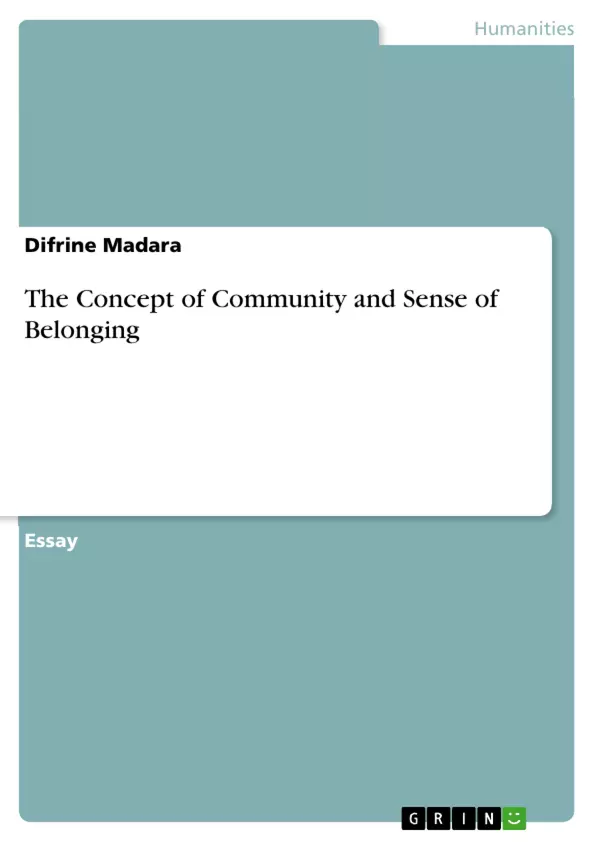Past studies have indicated that community cultivates a sense of belonging, shared interests and identity. Several sociological analyses highlighted that community may not have a single definition but revolves the ideas of socialization, mutualism and collective existence. This paper examines that meaning of community and sense of belonging with different contexts. The author begins by defining community according to various theories and studies, then links the definitions to the concept of "sense of belonging".
Community is one of the most important components of a broader society. As human beings advance and new civilizations emerge, the definition of community concept has also evolved. Traditionally, community was defined as a socially cohesive group of people who interacts with each other or organise themselves around shared values, goals or geographical area. However, in the contemporary world, the definition of community has surpassed physical boundaries and now encompasses the interrelationships of people across the world.
Concept of community varies depending on many factors or circumstances within the contemporary world. For example, the concept of community has been community used to distinguish segregated groups of people from others, for example black minority community, Aboriginal communities, and homeless communities. From this perspective, members of a specific community may share elements such as race, ethnicity, and socioeconomic disadvantages. Consequently, community can be described as a sociological construct characterised by a specific manner of human behaviours, set of relationships and meanings and expectations from the members.
Table of Contents
- Introduction
- Analysis and discussion
- Concept of community
- Sense of belonging
- Conclusion
Objectives and Key Themes
This paper aims to analyze the sociological concepts of community and sense of belonging. It examines how these concepts have evolved over time and explores their different manifestations in contemporary society.
- The multifaceted nature of community, including its geographical, social, and virtual dimensions
- The relationship between community and sense of belonging, highlighting shared values, norms, and practices
- The role of social capital in fostering community cohesion and individual well-being
- The impact of social pressures and conformity on individual behavior and belongingness
- The importance of positive and meaningful interactions in nurturing a sense of belonging
Chapter Summaries
- Introduction: This chapter introduces the concept of community and its historical evolution, emphasizing its importance within broader society. It explores how the definition of community has expanded beyond physical boundaries to encompass interrelationships across the world.
- Concept of community: This chapter delves into the varying definitions of community, exploring its manifestations in different contexts. It discusses the role of geographical location, social proximity, shared values, and social capital in defining communities.
- Sense of belonging: This chapter focuses on the concept of sense of belonging, examining its key characteristics and how it is cultivated within various social groups. It explores the importance of positive interactions, emotional attachment, and conformity to shared norms in fostering a sense of belonging.
Keywords
This paper examines the concepts of community and sense of belonging, exploring their intertwined nature and their relevance to social cohesion, social capital, and individual well-being. It investigates the impact of geographical location, social proximity, shared values, and social pressures on both concepts, drawing upon various theoretical perspectives and empirical studies to illuminate the complexities of human connection in contemporary society.
- Arbeit zitieren
- Difrine Madara (Autor:in), 2019, The Concept of Community and Sense of Belonging, München, GRIN Verlag, https://www.grin.com/document/504364



